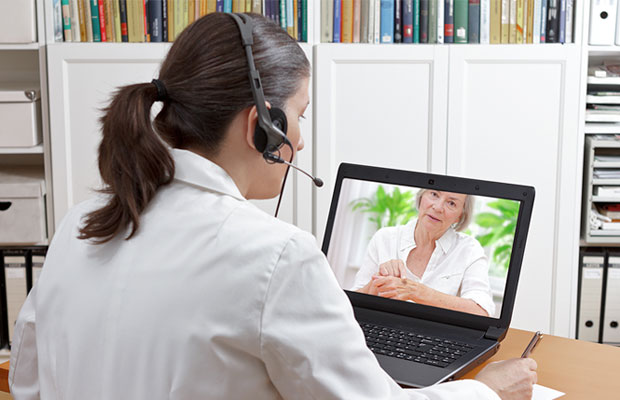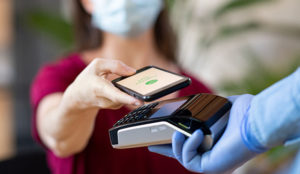Online medical appointments have become commonplace during the pandemic, and they’re likely to continue into the future, even as in-person medical visits resume. The convenience, accessibility and cost-effectiveness of telemedicine will make it a vital part of comprehensive medical care in the digital age.
“Both patients and providers can benefit from the convenience and accessibility of telehealth,” said Mia Finkelston, MD, medical director at Amwell.
“Patients can receive care from the comfort of their home, and providers can see patients from wherever is most convenient for them,” she told the E-Commerce Times. “Especially for patients in rural areas, or those who don’t have easy access to quality healthcare, telehealth can be a great option.”
Telemedicine has proven to be especially beneficial in the midst of a pandemic, when access to regular, in-person doctor visits has been restricted.
“In the context of an infectious disease outbreak, virtual visits offer providers an opportunity to screen and triage patients, mitigating the risk of contagion,” said Betty Rabinowitz, MD, chief medical officer at NextGen Healthcare.
Even in routine circumstances, however, telemedicine offers a number of benefits.
“Telehealth and virtual visits offer patients an opportunity to receive necessary healthcare services from a doctor, from the convenience of their home,” Rabinowitz told the E-Commerce Times.
“There are many types of clinical problems that do not require in-person visits, such as follow-up of certain chronic conditions and behavioral health visits,” she explained. “Telehealth provides physicians with a significant advantage and enables them to be more efficient and effective.”
Telemedicine is not just for younger patients who tend to be more tech-savvy.
“As a long-term virtual care provider I’ve seen the industry evolve quite a bit,” said Amwell’s Finkelston.
“Today, patients are more informed about when and how to use telehealth. Demographics are also changing, as we’re starting to see more older patients turn to telehealth,” she said.
“The technology is improving every day, giving virtual providers the ability to look into ears and listen to chests remotely,” said Finkelston. “I expect that as the technology continues to advance, the possibilities of what we’ll be able to do virtually will skyrocket.”
Best Practices
Visiting a doctor online isn’t quite the same as going to an office, and successful telemedicine requires both deft use of technology and clear communication skills.
“Telehealth visits can often be synonymous with in-person care, but there are some nuances that both patients and providers should be aware of to ensure a successful visit,” explained Finkelston.
“For instance, the more information that a patient can share during a telehealth visit the better. Oftentimes we’re seeing patients for the first time, so the more background we have about their medical history, prescriptions they are taking, etc., the more informed we’ll be as we assess them.”
Supplementary materials also can facilitate effective digital health communication.
For example, “patients can and should take photos and add them to their visit, which can be particularly helpful in diagnosing things like rashes,” said Finkelston.
“The more forthcoming a patient is about their sickness or ailment, the better the visit and outcome will be. It is often the simple details that a patient might think are irrelevant that can shed light on the problem,” she pointed out.
The basics of a good connection, setting, and lighting are also all an important part of successful telemedicine.
“It’s important that providers have a sound connection and private area for the visit,” said Finkelston. “For example, the WiFi signal should be strong, and the lighting positioned well for evaluation, with no one else around. The right approach and communication from providers can also be critical for building trust with a patient, especially if it’s their first visit.”
Meeting Challenges
It’s not always easy meeting a doctor online, however, and telehealth’s challenges must be overcome for successful treatment. That could mean something as simple as adapting the location of the virtual visit.
“Some patients do not have WiFi access with sufficient bandwidth to support virtual visits,” said NextGen’s Rabinowitz. “We recently heard of a group serving patients in a socioeconomically challenged area offering patients an option of a drive-through line, where they provide the patients with a connected iPad to initiate the telehealth visit from their cars.”
It’s important to make sure that patients are comfortable with the technology before they commence a telehealth visit.
“Some patients are challenged by the need to use a computer or tablet or phone to conduct a virtual visit,” explained Rabinowitz. “Many practices will have medical assistants help the patient to set up for the visit.”
Just as with in-person medical visits, it’s important that there’s clear communication between the doctor and the patient before, during and after the visit.
“It has to be more than video,” said Mike Morgan, CEO of Updox.
“The experience starts long before the session,” he told the E-Commerce Times. “The patient needs to be prepped and engaged.”
The Evolution of Telemedicine
Now that the pandemic has brought telemedicine to the forefront of discussions about the practice of medicine, it’s likely to play an increasing role in routine care.
“Telehealth will no longer be a plus or nice-to-have for practices — it will become a requirement to stay in business,” said Morgan.
“Virtual care will truly transform healthcare with modern, impactful ways to maximize patient engagement, improve outcomes, and enable more timely, efficient connections between patients and their physicians,” he predicted.
“More and more providers across the continuum of care will adopt telehealth, and solutions partners will expand offerings to combine video chat, secure text, broadcast and other technologies to create a true virtual care environment,” Morgan added.
As other technologies evolve, so will telemedicine.
“Telemedicine utilization has had rapid exponential growth during the COVID-19 pandemic,” Morgan pointed out. “Its features are going to continue to evolve as the software is deployed and heavily used across many specialties. From our recent conversations with health leaders across the country, it is clear that telemedicine is here to stay, even after the pandemic has resolved.”
Because telehealth has become so visible recently, it’s likely that both patients and medical professionals increasingly will accept it as an indispensable component of comprehensive healthcare.
“Now that the pandemic has brought telehealth into the limelight, we’ve gotten over one of the major hurdles that has historically stalled adoption — awareness,” said Finkelston.
“Once people try telehealth, they usually love it. As such, I anticipate that telehealth will continue to become more mainstream and embedded as a regular part of our healthcare system and the way patients engage with providers,” she said. “Doctor’s offices and other traditional healthcare settings will realize they need to offer virtual care options, as that’s what patients will want, even post-coronavirus. The future is bright for telehealth.”
























































This saves lot of time and also make the work easier.